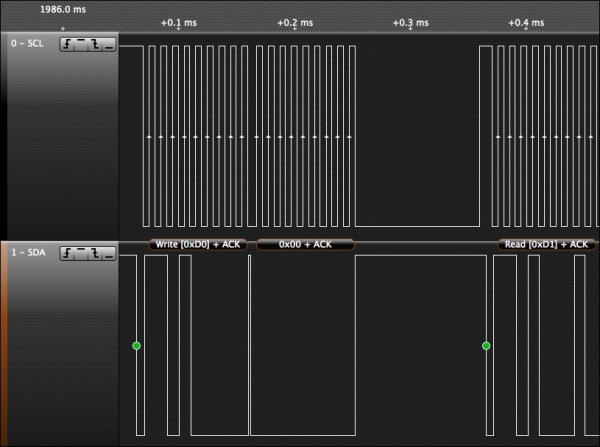Every chip on the CryptoCape uses the Inter-Integrated Circuit (I2C) Bus. I2C was developed by Phillips Semiconductor over 20 years ago, but it is still very prevalent in electronics design today. I2C requires two signal lines, one for a Serial Clock (SCL) and the other for Serial Data (SDA). Devices attached to the bus are either classified as master or slave. Each slave device has an address and there can be more than one master. The I2C protocol supports collision detection and is a true multimaster protocol.
The SDA and SCL lines are pulled up to the system voltage, VCC, typically with resistors connected from VCC to SDA and VCC to SCL. The processor on the BBB, the AM335x, contains internal pull-up resistors for the bus. Data is encoded to the bus by manipulating the logic levels of the SDA and SCL lines. For example, to start sending data, the master pulls SDA low while holding SCL at a logic high. The stop condition is sent with a low to high transition of SDA while holding SCL high.
Note
Revision 6 of the I2C bus specification can be found on NXP semiconductors (previously Phillips) website at http://www.nxp.com/documents/user_manual/UM10204.pdf.
The following screenshot shows a normal I2C operation as captured by a logic analyzer. A logic analyzer is an instrument that can sample electrical connections and often decode the signals to produce a human readable format.

